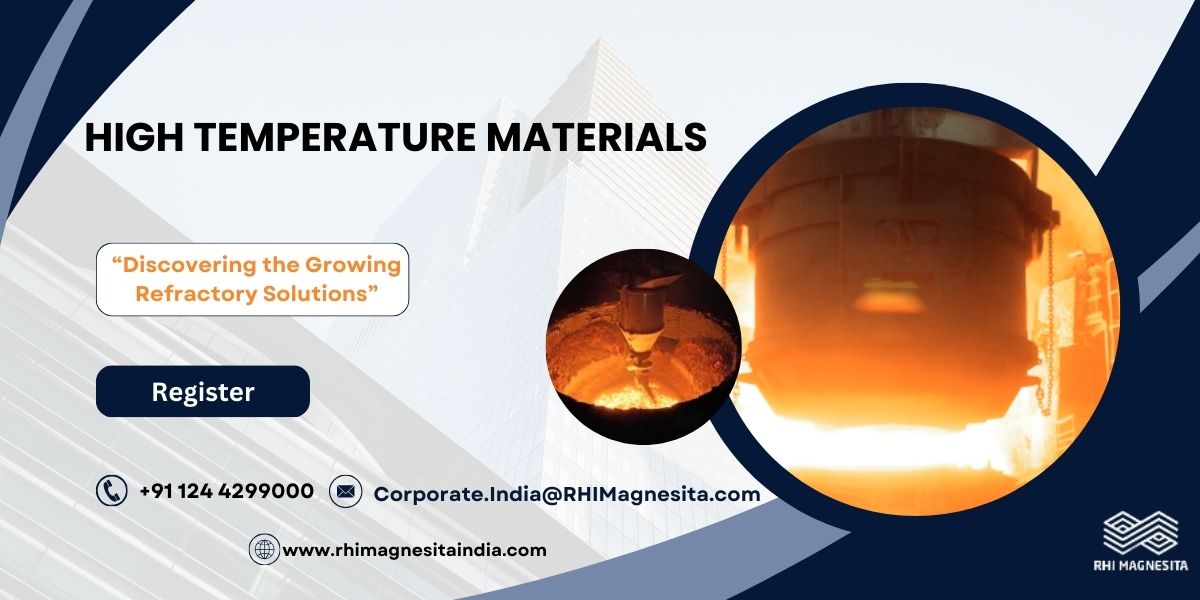
Refractory solutions or high-temperature materials form the backbone of many industrial applications as they show dependability and durability against demanding environments. These high resistant materials are created to resist mechanical stress, corrosion, and extreme heat, ensuring flawless operations in fields such as metallurgy, ceramics, glass manufacturing, and petrochemicals. Their fundamental importance goes beyond just durability; they are crucial in improving energy efficiency and safety by reducing heat losses and lowering the hazards connected with high-temperature operations.
Maintaining structural integrity while resisting deterioration is vital as it increases equipment’s lifetime and protects operational effectiveness. High temperature materials become more important as different industry sectors change and need better performance criteria for innovation and development in many fields.
Significance of High Temperature Materials
The capacity of refractory materials to resist severe heat ensures that buildings and machinery keep their integrity, averting catastrophic breakdowns that cause disturbance of operations and compromised safety. Furthermore, these high temperature materials are meant to resist corrosion from strong chemicals and thermal stress, preserving the equipment in use as well as the surroundings.
Effective management of mechanical stress helps refractory materials permit continued operations in situations that would otherwise deteriorate materials, hence extending the lifetime of industrial equipment. Heat resistant materials are essential not only for lining furnaces in the glass industry but also shielding ladles and furnaces from the intense heat produced during smelting in steel manufacturing.
Refractory materials not only increase production but also help to save energy by ensuring safe and efficient operations within such adverse circumstances, opening the path for a more sustainable industrial future. Their value cannot be underestimated as they support the fundamental foundation of contemporary industrial excellence.
Emerging Trends and Innovations in Refractory Solutions
Driven by a surge of innovations and rising trends addressing the growing needs of contemporary industry, the realm of refractory solutions is fast changing. First in importance is a move toward sustainability as producers create recyclable and environmentally friendly high resistant materials. These solutions not only lower environmental impact but also fit with global green projects as they provide businesses with sustainable paths without sacrificing performance. Companies may now recover and re-use refractory materials by adopting circular economy ideas, prolonging their lifetime and reducing waste.
The use of nanotechnology improves durability and thermal efficiency while marking yet another amazing development. Refractory materials with nanoscale compounds show better resilience to wear, corrosion, and severe temperatures, enabling different industries to reach better operational efficiency. These materials provide robustness in even the toughest environments while permitting lower maintenance requirements and better energy economy.
Furthermore, as sectors look for custom refractory designs to meet specific demands, demand for customized solutions is growing. Whether for sophisticated glass production, petrochemical facilities, or aircraft, these tailored solutions provide the best performance by exactly matching industry-specific requirements. Refractory solutions are brightening the future with these innovations clearing the path by balancing sustainability, efficiency, and accuracy to address the always-changing industrial requirements.
Future Outlook at a Glance
Driven by changing demands in the energy, aerospace, and electronics sectors, the need for high resistant materials is skyrocketing as sectors stretch into new frontiers. Advanced refractories now play a critical role in these high-stakes situations where materials must withstand mechanical stress, chemical exposure, and severe temperatures. From power plants to satellites and semiconductors, every industry depends on these strong materials to ensure operational stability and efficiency.
R&D projects focusing on creating new alloys and specialty coatings clearly show a major drive toward innovation. These developments ensure that refractory goods satisfy the highest requirements of contemporary industrial applications by improving their strength, heat tolerance, and longevity. Improved coatings also reduce corrosion, so these materials are essential in high-performance settings where accuracy and lifetime are non-negotiable.
Rising investments in construction, manufacturing, and transportation drive the need for improved refractory solutions, so this advancement in innovation fits the global expansion of infrastructure. Further widening the frontiers of the market are fast urbanization, smart industries, and sophisticated power systems. Driven by an unrelenting search for performance, sustainability, and innovation globally, the market for refractories will keep growing as industries adopt new changes.
Concluding Remarks
As the bedrock of high-temperature environments, high temperature materials ensure the flawless operation of sectors where heat, pressure, and chemical exposure interact. Across industries like steel, cement, glass, and petrochemicals, their capacity to withstand scorching temperatures, corrosive elements, and mechanical stress makes them indispensable. These materials optimize energy efficiency and preserve the structural integrity of furnaces, kilns, and reactors, therefore averting catastrophic breakdowns, and acting as quiet guardians.
Refractories extend the lifetime of vital equipment by overcoming the toughest conditions, so reducing operating expenses and downtime. Refractory solutions are essentially the unseen power ensuring that high-performance industries run securely and smoothly while enabling fueling global development with resilience and precision.